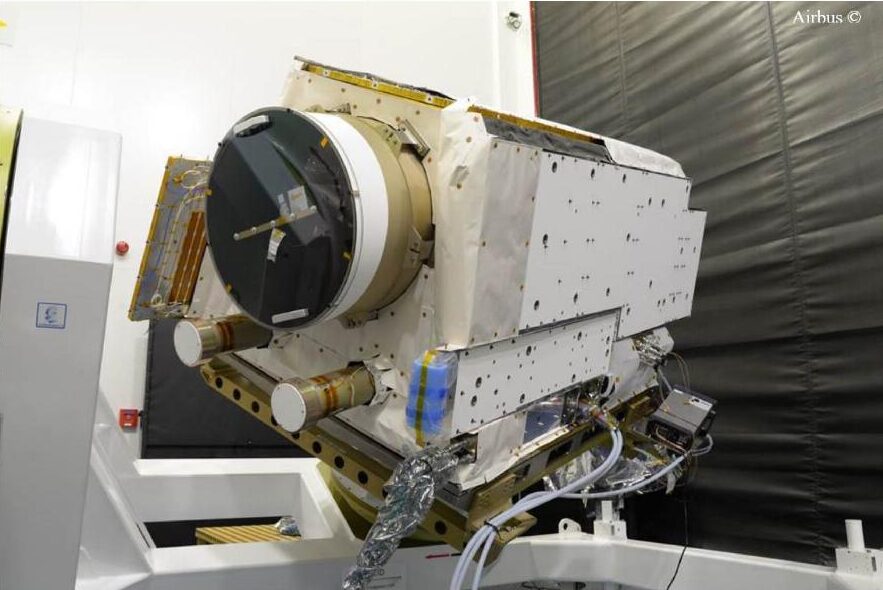The Earth Cloud Aerosol and Radiation Explorer (EarthCARE) satellite mission, a collaborative endeavour between the European Space Agency (ESA) and the Japan Aerospace Exploration Agency (JAXA), aims to revolutionize our understanding of the complex interactions between clouds, aerosols, and Earth’s radiation balance.
Launched on May 29, 2024, from Vandenberg Space Force Base aboard a SpaceX Falcon 9 rocket, EarthCARE is equipped with a suite of advanced instruments designed to provide unprecedented insights into atmospheric processes that are crucial for climate science.

The primary goal of EarthCARE is to investigate the roles that clouds and aerosols play in reflecting solar radiation back into space and trapping infrared radiation emitted from Earth’s surface. This dual function significantly influences the planet’s energy balance and, consequently, its climate system. Despite their critical importance, clouds and aerosols remain one of the most significant sources of uncertainty in climate models due to their complex and highly variable nature.
Scientific Instruments
Equipped with four state-of-the-art instruments, EarthCARE makes a range of different measurements that together provide unique insights into the complex interactions between clouds, aerosols and radiation.
Cloud Profiling Radar (CPR)
Developed by JAXA, the CPR operates at 94 GHz and provides detailed vertical profiles of clouds, including measurements of cloud particle vertical velocities through Doppler techniques. This instrument is essential for understanding the internal dynamics and structure of clouds, which are pivotal in atmospheric heating and cooling processes.

Atmospheric Lidar (ATLID)
ATLID operates at a wavelength of 355 nm and offers high-resolution vertical profiles of aerosols and thin clouds. Its high-spectral resolution receiver and depolarization channel enable precise characterization of aerosol types and their distribution, which are vital for assessing their climatic impacts.

Multi-Spectral Imager (MSI)
The MSI captures across-track information on clouds and aerosols across multiple wavelengths, including visible, near-infrared, shortwave, and thermal infrared. This wide spectral range allows for comprehensive observations of cloud and aerosol properties and their interactions with radiation.

Broad-Band Radiometer (BBR)
BBR measures top-of-the-atmosphere radiances and fluxes, featuring one short-wave and one long-wave channel with three fixed viewing directions. This instrument provides crucial data on the energy entering and leaving Earth’s atmosphere, which is essential for understanding the overall radiation budget.

Mission Profile
EarthCARE orbits in a polar, sun-synchronous path at an altitude of 393 km, with a descending node at 14:00, ensuring consistent lighting conditions for observations. The satellite’s design features a three-axis stabilized platform, extending 17.2 meters in length (including an 11-meter solar array), 2.5 meters in width, and 3.5 meters in depth, with a total mass of 2200 kg.
The mission is designed to last a minimum of three years, including six months of commissioning. EarthCARE carries enough consumables to potentially extend its operation for at least an additional year, bringing the total potential mission duration to four years.
Contribution to Climate Science
Data from EarthCARE will be transmitted via X-band downlink to ground stations in Kiruna (Sweden) and Inuvik (Canada), while command and telemetry data are managed through S-band uplinks to Kiruna, North Pole (US) and Troll (Antarctica). ESA’s European Space Operations Centre (ESOC) in Darmstadt, Germany, oversees mission control, with ESA’s Centre for Earth Observation (ESRIN) in Frascati, Italy, handling data processing in collaboration with JAXA.
EarthCARE’s comprehensive datasets will significantly enhance climate models, particularly in terms of kilometre-scale resolution global climate models. By providing detailed observations of cloud convection and its role in Earth’s radiation budget, EarthCARE is expected to reduce uncertainties in climate predictions and improve numerical weather forecasting accuracy. This mission comes at a crucial time as global climate change poses increasing challenges to our planet.
The EarthCARE mission represents a major step forward in atmospheric science, offering a unique and holistic view of the interactions between clouds, aerosols, and radiation. Its innovative instruments and international collaboration between ESA and JAXA exemplify the global effort required to tackle the complexities of climate change. As EarthCARE begins its mission, it holds the promise of delivering critical data that will deepen our understanding of Earth’s climate system and guide future research and policy decisions.
Rewatch the EarthCARE mission launch in the video below.


 Copyright 2023 All rights reserved.
Copyright 2023 All rights reserved.